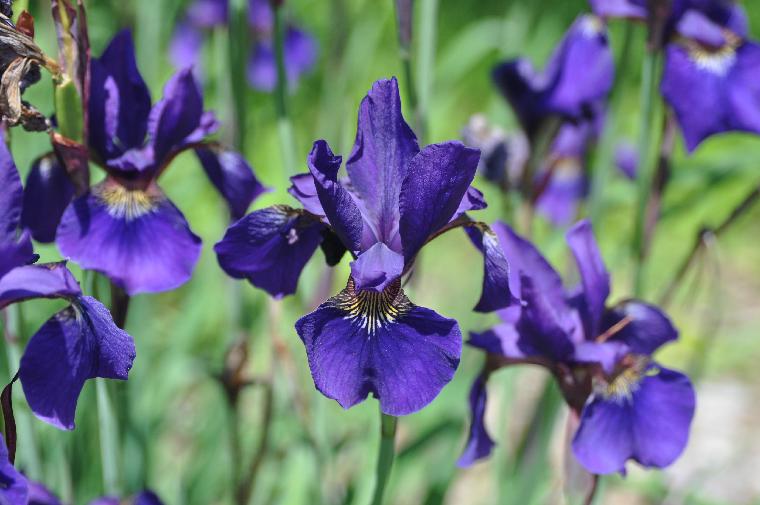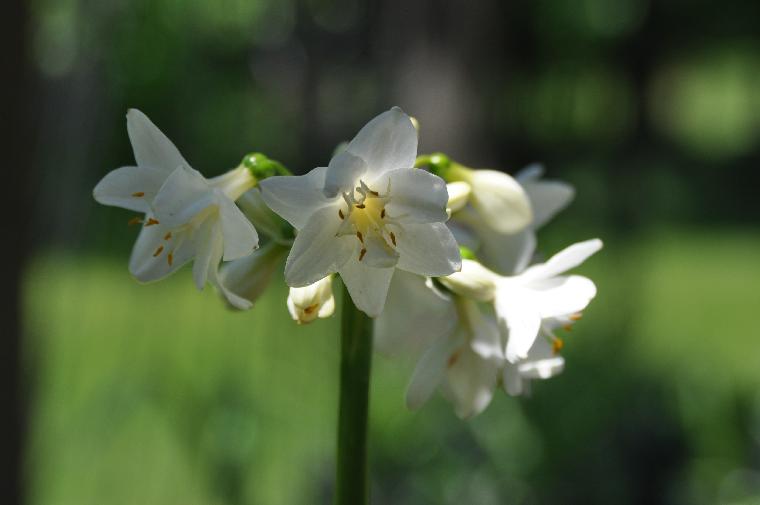Iris
In the Siberica group of irises, a standout is Iris sanguinea. I have one particular variety that has made a huge clump over the years. Unlike many other irises, this one survives my neglect and still blooms every year in springtime.

Iris sanguinea 'Kamyama'
Even earlier to bloom is Iris lactea, distinguished mainly by its flowers blooming down in the foliage. The tall bearded iris have all bloomed too, of course.
Scadoxus
These bulbs in the Amaryllis Family are native to Southern Africa. I am very fond of Scadoxus puiniceus, which is very easy to grow in the greenhouse and lath house, and which blooms reliably in February before the leaves have developed. Scadoxus multiflorus katherinae, the pretty sister of the multiflorus multiflorus found in many bulb catalogs, is harder for me to bring to flower. When it blooms, it blooms in July here.
A plant acquaintance in South Africa has crossed these two species, and then crossed their offspring. Seeds from the offspring, the F2 generation, have started to bloom for me. Here is one of the first two to bloom, as it appeared in late May in my lath house. So far, the February bloom time and the July bloom time of the grandparents seem to have produced a median bloom time in these grandkids.
![Scadoxus [puniceus x katherinae] F2 (c) copyright 2010 by Shields Gardens Ltd. All rights reserved.](Scadoxus_katherinae_x_puniceus_F2_Nr2037B_0303_ml.jpg)
Scadoxus [puniceus x katherinae] F2
Proiphys
This is a genus of the Amaryllis Family that is native to Australia. I have had Proiphys amboinensis for years. It blooms in mid-summer, when it blooms, and is usually deciduous in the greenhouse in winter. A second species in this genus, Proiphys cunninghamii, came my way a few years ago; and now it is blooming.

Proiphys cunninghamii
The flowers are about 1½ inch across.
Note that in the picture above, the center flower that you are staring straight into is a little unusual: it is a polytepal, having four petals and four sepals instead of the usual three of each.
I kept this one watered and growing in the warm greenhouse all last winter. Now both plants are in bloom, so it must have liked the treatment it received. I'm cross-pollinating the two blooming plants in hopes of getting a few seeds. This plant deserves to be better known.
Good gardening, from here in central Indiana
Jim
Look up technical terms in the Glossary of Plant Biology